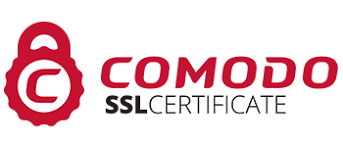MARIGOT--The 13th International Athletics Meet held in Albéric Richards Stadium on Saturday, organised by Speedy Plus Club, was another success with many personal best times recorded, thanks to a very light but favourable breeze.
As usual, the day started with the schools from St. Maarten, St. Martin, Anguilla and St. Barths competing against each other in teams in the categories eight and under and 10 and under. Athletic clubs of both sides of the island were represented.
That was followed by the regional, inter-regional competition leading up to the much-anticipated international races in the afternoon, featuring several Olympians and national medal winners.
First Vice-President of the Collectivité Valérie Damaseau gave the opening remarks and helped give out medals. Former Mayor Albert Fleming was also present.
Some of the stand-out international performances included that of USA’s Alec Harris posting the fourth-fastest time of the year winning the 110-Metre Hurdles in 13:26, Italian 400-metre record holder Libania Grenot improved on her 100- metre time to 11:61, though she finished sixth behind winner USA’s Alexandria Anderson (11:26). USA’s Jasmine Todd was second (11:49) and Italy’s Gloria Hooper third (11:55)
USA’s Sharika Nelvis clocked the second-fastest time of the year in the 100- metre Womens Hurdles with 12:59. USA’s Jasmine Stowers was second (12:65) and USA’s Christina Manning third (12:72).
2016 Rio Olympics silver medallist Nia Ali was coming back from injury and only managed a ninth place in the hurdles(13:29)
In the Long Jump, Cuba’s Juan Miguel Echevarria, who is under 20 years old, jumped a distance of 8.19 metres to win ahead of Sweden’s Michel Tournus and Jamaica’s Damar Forbes in third.
In other results, Women’s Long Jump was won by Bahamas’s Bianca Stuart with 6.50 metres, USA’s Jasmine Todd was second and USA’s Jessie Gaines third.
The Women’s triple jump was won by Jamaica’s Kimberly Williams with a distance of 14.32m, Ghana’s Nadia Eke came second and Cuba’s Liadagmis Povea in third.
The Men’s 100 metres was won by Liberia’s Emmanuel Matadi in 10:19, USA’s Beejay Lee was second (10:22) and USA’s Diondre Batson was third (10:26).
USA’s Taylor Washington won the Women’s 400 metres in 52:68, USA’s Jordan Lavender second (53:05) and Italy’s Gloria Hooper third (53:27).
Paul Dedewo of the USA won the Men’s 400 metres in 45:30, Trinidad’s Gordon Lalonde was second (46:14) and Curacao’s Liemarv Bonevacia third (46:34).
The Women’s 200 metres was won by USA’s Kimberly Duncan in 22:54, USA’s Tiffany Townsend was second (23:02) and Australia’s Ella Nelson third (23:05). Nelson is based in Phoenix, Arizona, for training. Her previous best time was 22:50 at the Rio Olympics.
USA’s Dedric Dukes won the Men’s 200 metres in 20:37, Trinidad’s Gordon Lalonde second (20:58) and USA’s Curtis Mitchell third (20:72).
Paul Doyle, one of the managers for the US athletes, who assists organisers bring down athletes for the meet, said he was impressed by the performances.
“Nia Ali struggled in the hurdles today, as she was coming back from injury”, he said. “The 100-metre Hurdle field was really impressive. Jasmine Stowers and Sharika Nelvis were the two fastest girls in the world the year before. There was some good quality in the sprints as well.”
Chief organiser and President of Speedy Plus Club Calvin Bryan said he was happy with how the event went, but regretted the turnout from the public was disappointing for such a prestigious meeting with top international names.
“We have to work on getting more private sponsors for next year. It is a big problem, because this kind of professional meeting has a lot of expenses,” Bryan added.
Some of those expenses include renting the electronic timing systems and sophisticated high-speed cameras for the photo finishes.
“We brought down three cameras, two that shoot 2,000 frames per second, and one that shoots 1,000 frames per second as a back-up,” explained international coach Loren Seagrave. “It’s very high tech. Then Scott Peters from Half Mile Timing flew in to run the machinery, because you don’t want to make a mistake in a big international meeting, when someone runs a fantastic time and then there’s a problem.
“This is what takes the meeting up to a higher level. It’s important for sponsors to know that without this kind of technology, the top athletes won’t come.”
Next year Ipads will be used for the jumping events, doing away with the pen and paper, he disclosed.






